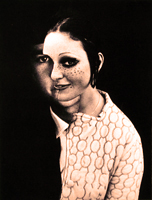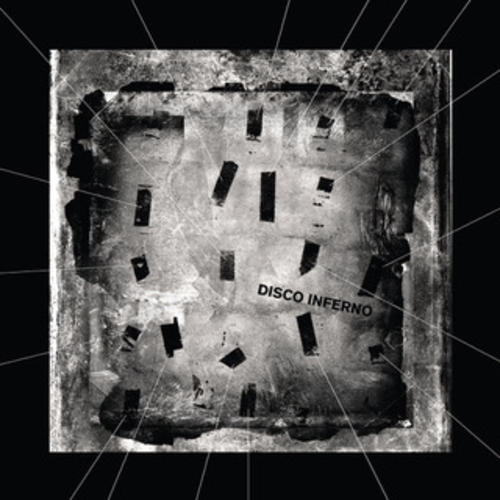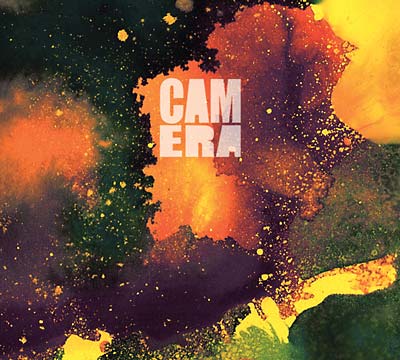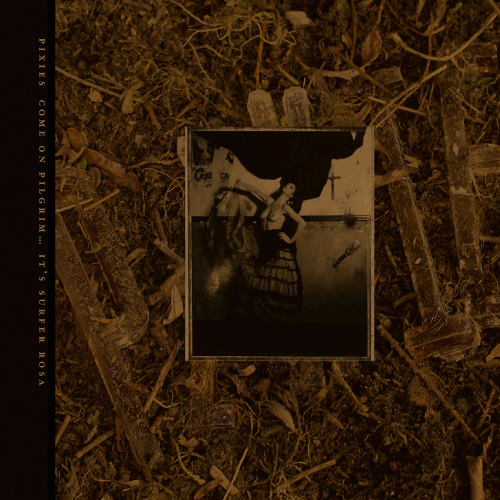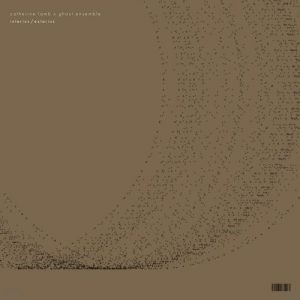 With apologies to everyone’s favourite contemporary composition house Greyfade, this review is massively delayed and the record’s been out a while. So the more keenly-teethed amongst you will doubtless have bitten down long and hard on Catherine Lamb‘s new release already.
With apologies to everyone’s favourite contemporary composition house Greyfade, this review is massively delayed and the record’s been out a while. So the more keenly-teethed amongst you will doubtless have bitten down long and hard on Catherine Lamb‘s new release already.
So Interius / Exterius is a record that’s brought to mind a lot of things. Some of them in the realm of purple prose (“VI” giving the impression of a pointillist snow scene descending into quiescent nightfulness), some in the realm of similarities — New York avant-garde like La Monte Young / Rhys Chatham in non-guitar vein, textural deep listening of the Pauline Oliveros sort, spectralism and, to a limited extent minimalism. If any of those terms flick your switches then, well, dive in.
I’m keen to separate some of this though — while there’s elements of textural play, there’s substantial actual music here to make sure it’s not just ‘vibes ambience’ at play. The clouds of complex microtonal chords in “I” could sit on their own, but there’s enough clear, near-melodic notes floating through to make it distinctly composed. I say ‘near-melodic’ notes because while there’s definitely lines that you’d maybe call monodic lines (that is, single notes), they’re effervescent enough to never quite land like melody. If it’s not clear, this is a lovely effect. The press notes on this explain that there’s a specific tuning system at play, derived from the (theoretical) harmonic series of a 10hz fundamental. If that’s not entirely clear, I can’t imagine it impacting your enjoyment of the record itself.It means that the tuning system at play is rich in complexity — in parts there’s plenty that’s recognisable as adjacent to natural harmonic series of the just intonation sort (think of a sitar playing something like a major key); elsewhere there’s super tight intervals giving properly head-wobbling dissonance. There’s a constant tension between hard dissonance and placid consonances, as well as intervals that are a great deal more ambiguous (or, given the microtonality here, under-subscribed as musical effects)
What I’m eking out here really is that this addresses a few problems I have with ‘experimental’ composition — too often there’s a concept and a sound and no real exploration of musicality. For Lamb there’s clearly an interest in quite concrete sound — not entirely dissimilar to spectralist composers — but Lamb’s closer to Kaija Saariaho than Gérard Grisey insofar as it’s not merely music which says “look at this effect I’ve observed”. I’m reminded also of Horațiu Radalescu in that there’s plenty of luscious swirling clouds of microtonal throb, but Lamb improves upon the spectralist mess — by and large those clouds are accented with more directly musical single-note lines that function like melody (or if not phrasal melody then at least in-focus colouration).It’s a great record, but as ever with Greyfade there’s a degree of invention and expression that keeps it from being austerely intellectual. Again with regards spectralism, while this doesn’t sound anything like most Saariaho, there’s a sense of actual musicality and regard for a broader audience that keeps this from being merely something for theorists to ponder (though there’s plenty for those folk too). In my head, very Saariaho.
I’ve not seen the packaging, but there’s no way that it’s not fit as you like; so it’s definitely a timely purchase for your friends and family who are all, doubtless, well into this shit.-Kev Nickells-
